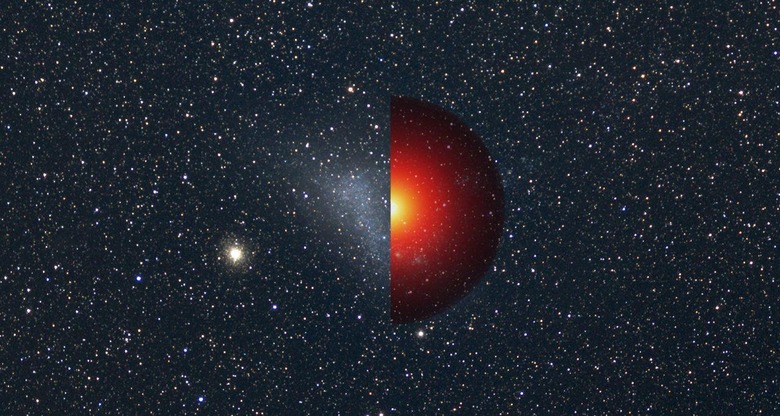We Still Can't Pin Down Dark Matter
As fruitless hunts go, the search for dark matter takes some beating, forcing researchers using NASA's Fermi Gamma-ray Space Telescope to branch out as they hunt for evidence of currently-theoretical particles. Though it's believed to make up the majority of the matter in the universe – around 80-percent, experts claim – dark matter is proving frustratingly elusive to actually identify, and now NASA's team is getting creative to try to pin it down.
"We've looked for the usual suspects in the usual places and found no solid signals," Julie McEnery, Fermi project scientist at NASA's Goddard Space Flight Center in Greenbelt, Maryland, said of the hunt, "so we've started searching in some creative new ways."
In fact, three studies this year alone have each taken a novel look at dark matter and yet come up with nothing conclusive. One, for instance, theorized that hypothetical particles called axions could make up dark matter, and be identified as gaps or steps in gamma-ray signals – the form of light with the highest energy – that Fermi could see.
However, while there was a small percentage of possible axion-like particles among the six year's worth of Fermi data the group analyzed, "we don't yet know what dark matter is," Manual Meyer of Stockholm University, study lead, admits.

Over at the University of California, Santa Cruz, meanwhile, a team led by Regina Caputo suggested another possible dark matter candidate, Weakly Interacting Massive Particles (WIMPs) could collide and produce gamma rays, watching the Small Magellanic Cloud (SMC) around 200,000 light years away from Earth to see if there was evidence there.
"The [Large Area Telescope] definitely sees gamma rays from the SMC, but we can explain them all through conventional sources," Caputo concluded.
As for the third study, rather than trying to find evidence of gamma rays produced by dark matter, Marco Ajello of Clemson University in South Carolina and Mattia Di Mauro at the SLAC National Accelerator Laboratory in California looked instead at the background glow of gamma rays ubiquitous across the sky. They speculated that the so-called extragalactic gamma-ray background (EGB) could, in part, be produced by dark matter particles.
Unfortunately, instead they found that existing sources could account for nearly all of the EGB. "There is very little room left for signals from exotic sources in the extragalactic gamma-ray background," Ajello says, "which in turn means that any contribution from these sources must be quite small."
Nonetheless, scientists refuse to give up, preferring to see the results as a way to narrow down potential candidates rather than overturned theories.
MORE NASA
